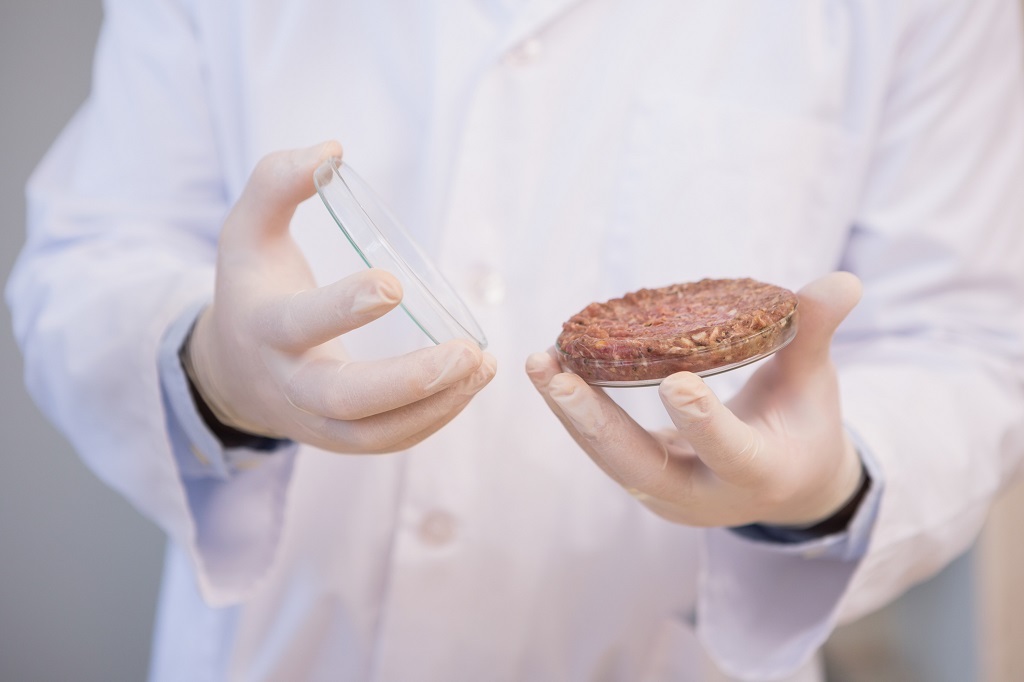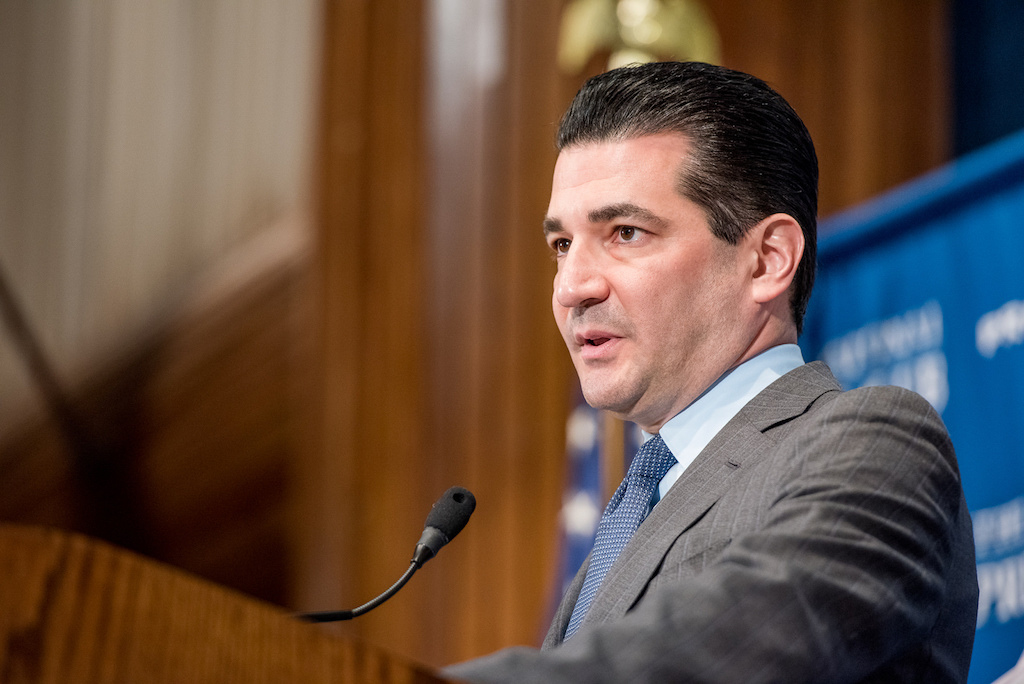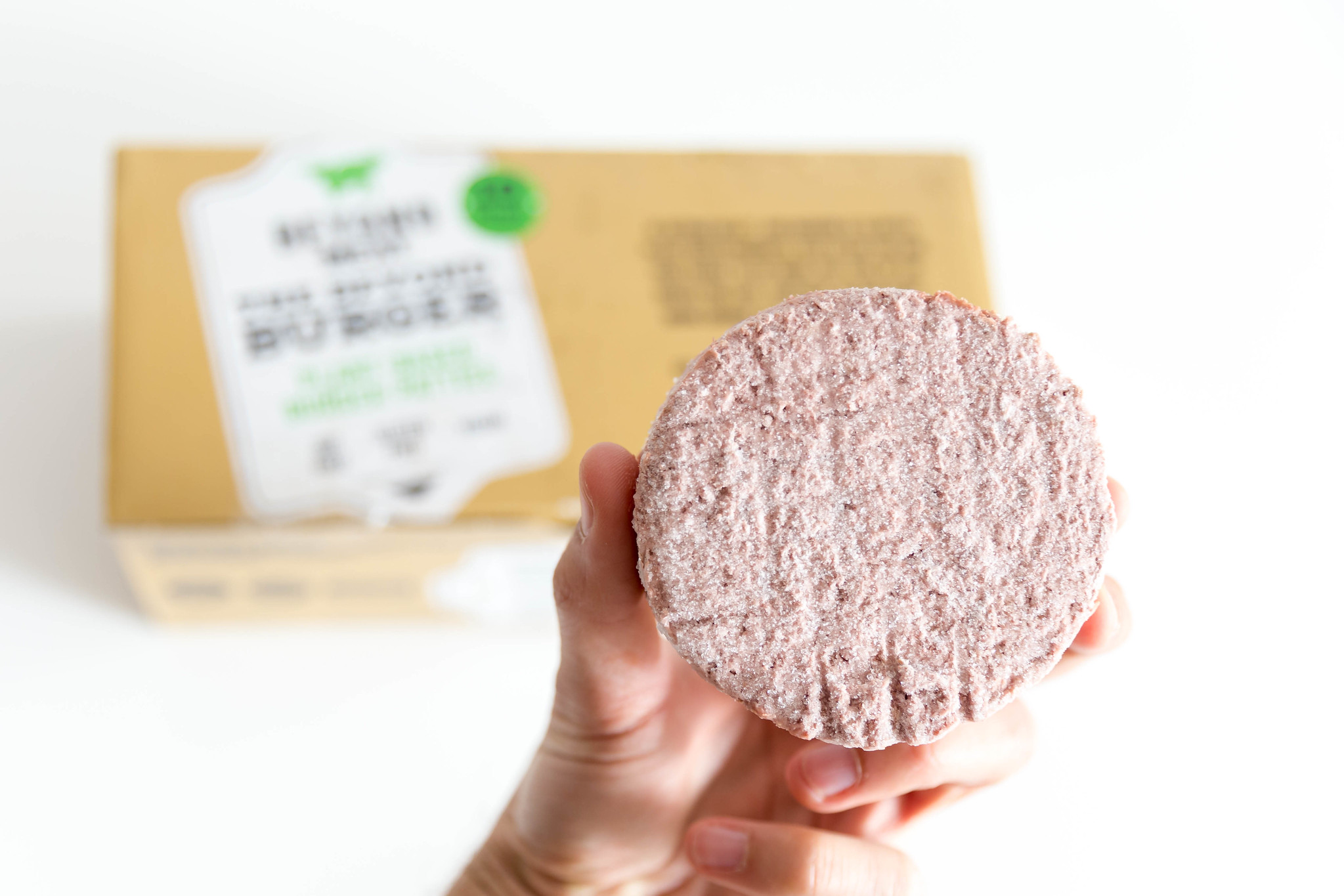Washington, D.C.—This week, the federal agencies that regulate America’s food supply wrapped up two days of joint public meetings about the emerging technology of cell-cultured meat—that is, meat that comes from an animal cell, not a carcass.
It wasn’t the first time the government held a public meeting to present what it knows about the safety of the technology, which captivates the public’s imagination as much as it confounds regulators, and to get feedback from industry stakeholders. The Food and Drug Administration (FDA) did similar back in July. FDA regulates around 75 percent of the nation’s food supply, though not meat and poultry. It also regulates cell-cultured biomedical products.
It was, however, the first time the United States Department of Agriculture (USDA) was formally involved. The agency even hosted the convergence in its building. That’s significant, because USDA regulates the nation’s meat supply. Its mere presence in the meetings suggests that the material currently being prototyped in labs, as novel as it is, really is meat.
“I’m both surprised and disappointed that no one from the United States Department of Agriculture is on any of today’s panels. This meeting should have been held jointly by USDA and FDA,” said Tiffany Lee, NAMI’s director of regulatory and scientific affairs, at the time. “Let me be clear about the Meat Institute’s position. Primary jurisdiction over the regulation of cell-cultured meat products rests with the United States Department of Agriculture.”
(We’ll get to why they’re so hot for USDA to be involved in a second.)
The big news was made early on this week, when USDA Secretary Sonny Perdue and FDA Commissioner Scott Gottlieb announced that the two agencies intend to jointly regulate these new products—with each agency having particular areas of jurisdiction—in what could be a first-of-its-kind arrangement. Until now, the division of labor in food regulation and safety has gone like this: USDA regulates meat, poultry, some egg products, and catfish. FDA regulates practically everything else. That’s made for an uneasy alliance.
Based on statements made by Gottlieb, Perdue, and various regulators from each agency, it sounds like FDA may take the unusual step of conducting a pre-market approval of any cell-cultured meat product, the standard process for pharmaceuticals. The agency already does so for medical drugs and biologics that are made through cell culturing technology—like, for example, gene therapies. The same is not required for food.
“We regulate drugs, and we assume that they are unsafe until we have proved them safe,” says Kowalcyk. “Food is the opposite. Food is safe until we prove it unsafe.”
The future scenario, then, may look this way: After a cell-cultured meat product passes FDA muster, USDA will take over when it moves to production at commercial scale. Giving the agriculture department, and its Food Safety Inspection Service (FSIS), that kind of authority over cell-cultured meat would delight ranchers and meatpackers, who say that cell-cultured companies should have to play by the same rules they do.
A spokesman from a livestock lobby in attendance at the meeting told me that, if cell-cultured meat companies were subject just to FDA safety inspections, which happen only every five to seven years, it would give them a tremendous advantage over their carcass-based competitors, who deal with USDA inspectors in their processing plants every day. (The stringency of those inspections, of course, isn’t guaranteed when it comes to food safety.)
 Marie Gibbons
Marie Gibbons One thing cell-cultured meat won’t be called is “clean meat”
Gottlieb told reporters, including me, that he expects to have the particulars of that co-regulatory framework—a wide-ranging process that will cover how cell-cultured products are harvested, manufactured, and commercialized—hammered out before his agency starts looking at applications to approve products for market. So even if a cell-cultured meat company is ready right now to launch a product, it’ll have to wait to submit its material for inspection first.
Perdue, standing by Gottlieb’s side, said that if the regulatory framework is finalized in 2019, “that’d probably be pretty fast for federal agencies.” Fast, indeed—if that’s true, regulators could be evaluating cell-cultured hamburger or chicken nuggets in a year’s time. But that’s not the timeframe that some cell-cultured meat companies were hoping for. JUST, for example, has pledged to have a poultry product on the market this year. I asked Peter Licari, the company’s chief technology officer, if JUST still intended to meet that goal.
“I don’t think we’ve been specific about where we’re launching our product,” he says. In other words: If not the U.S., then maybe the company would look first to release a product in countries with friendlier regulations, like China or Singapore. When I pressed him for specifics, he demurred: “I’m not going to go into the details.”
Ranchers and packers who feel threatened by the cellular agriculture industry’s desire to use the term “meat” for their products are at the same time insisting that USDA have jurisdiction over them. And that contradiction puts them in a bit of a bind: they’re essentially admitting, by virtue of USDA’s current responsibilities, that cell-cultured meat is indeed meat. But when they insist, in the next breath, that cell-cultured meat is not meat, they’re implying the products should be regulated by FDA.
FDA jurisdiction over cell-cultured meat’s commercialization and production wouldn’t be good for traditional meat companies. During his comments, Kevin Kester, president of the National Cattlemen’s Beef Association (NCBA), said the playing field should be level—and it isn’t. First, there’s the inspection issue. FDA inspects less frequently than does USDA. Then there’s the label. FDA only intervenes on labeling after products reach the market. Theoretically, that could allow cell-cultured meat companies to put out a product under whatever name they like—imagine a Memphis Meats meatball or JUST chicken nuggets—over the strenuous objection of groups like his, and deal with the consequences post factum.
“Unfortunately, the FDA has consistently shown that they are unwilling, or unable, to enforce public labeling standards,” Kester said at the meeting. “That agency turned a blind eye to labeling abuse for fake milk manufacturers for nearly three decades.”
If USDA has jurisdiction over the burgeoning industry, then theoretically, companies would be less likely to violate standards of identity. The agency may not currently have pre-market approval over products, but it does have pre-market approval over labels. Whatever USDA eventually decides to term these cell-cultured meat products is the name we’ll see in the grocery store meat case. Kester, for his part, repeatedly used the term “fake lab-grown meat.”
One thing we do know: the protein likely won’t be called “clean meat.” That term, which has been favored by the cell-cultured meat industry for years, was intended to communicate both a lesser environmental burden, and a safer, more sterile production environment—tenets that were challenged throughout this week’s meetings.
In August, in a joint letter to the Trump administration, NAMI and Memphis Meats, a leading cell-cultured meat company backed by Tyson and Cargill, both suggested the term “cell-based” as the right one for the product. Eric Schulze of Memphis Meats reiterated that language at Wednesday’s hearing, commenting that the company “no longer believes ‘clean’ is the right term” for its product. As we’ve pointed out, “clean meat” is perceived by some as disparaging traditional meat producers.
“Clean meat”—we hardly knew ye.
Selden also commented, repeatedly, on another name he hopes will go away: “lab-grown meat.” Right now, he said, companies like his grow prototypes in labs. When their products are ready to go to market, they’ll be made in commercial facilities, just like any other food product. For people like Selden, calling the product “lab-grown meat” is akin to calling beer or Doritos “lab-grown”—because they, too, are products first prototyped in food labs.
For others, the whole conversation is just a waste of time. Nigel Barrella, a Washington, D.C.-based attorney, pointed out that FDA and USDA both have been responding to public complaints about food labeling since the 1970s. He listed examples that might seem quaint to us now: low-fat cheese, turkey ham, and more recently, Tofurkey andouille sausage.
“It is not misleading to reference other foods,” he said about companies that introduce a new, alternative product. “The nature of these products is clear.”
You know what’s great about America? You can chime in on this, too. The USDA’s Food Safety and Inspection Service (FSIS) is taking comments from the public online through November 26.
Correction: An earlier version of this story referred to food company JUST as Just Foods. We regret the error.











